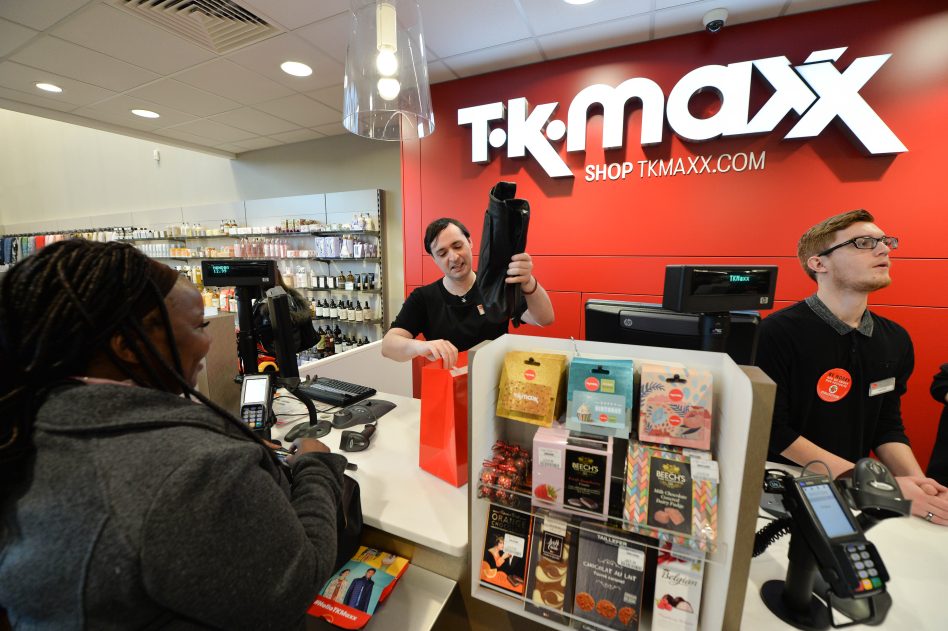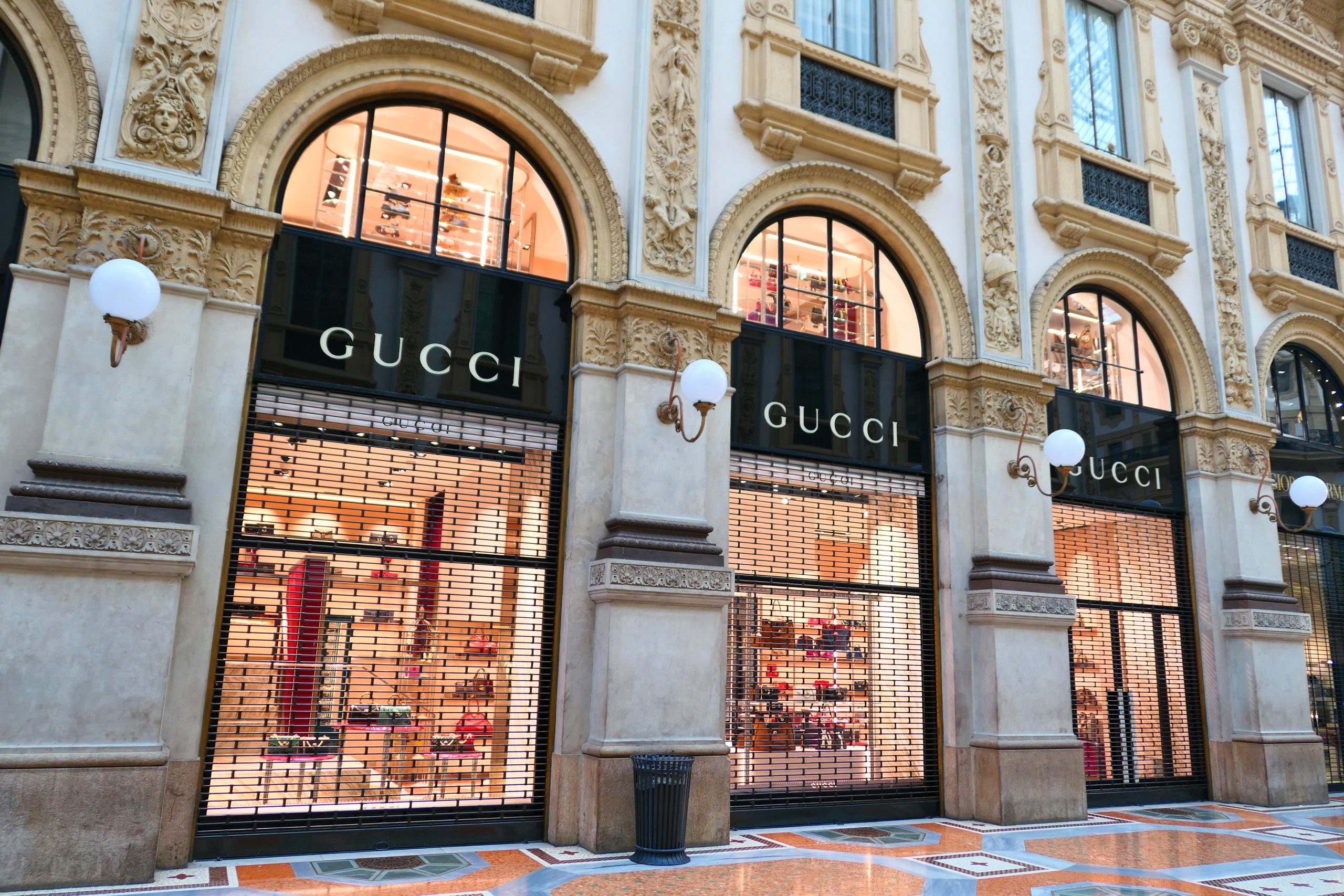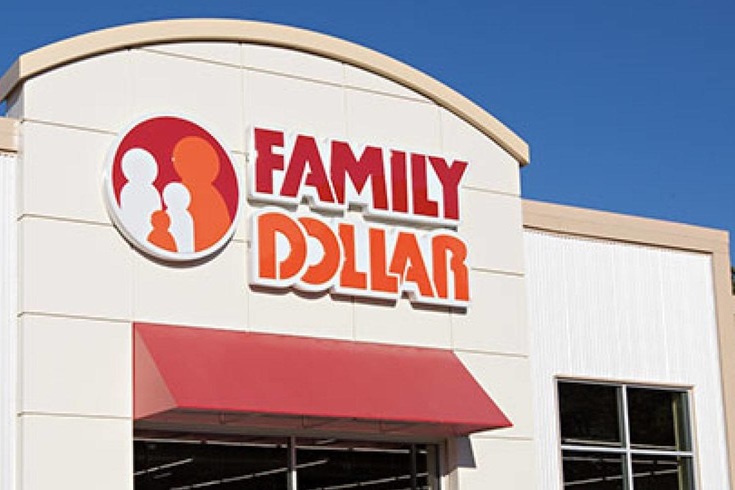
Image source: TK Maxx
As the luxury brand industry continues to slow, companies are now looking for creative ways to get rid of their increasing surplus of excess inventory without customers catching onto how bad the situation is quickly becoming.
Ever since the online shopping spree that took place during the COVID-19 lockdown months, customer spending in practically the entire luxury sector has slowed continuously. Sales throughout the industry increased by 15% on average in 2022, but since then it has been a very different story.
For example, in the United States, consumer spending budgets have been tightening for over a year now, with Europe now also starting to follow suit. In China, spending forecasts on items such as luxury brands have also been far less than predicted and hoped in 2023.
As a result of this as well as several other factors, the rate of growth in the luxury industry is anticipated to be roughly half of what it was from the year before. As a consequence, brand boutiques, retail outlets, and online stores have all been left with an overabundance of unsold merchandise. Some experts have stated that the condition of the market is now as bad as it was back during the economic crash of 2008.
One strategy brands are now using to offload this excessive stock problem is presenting substantial discounts on certain items. With that said, both high-end luxury brands and major fashion chain outlets will never sell goods too cheaply as it may hurt their public image in regards to the exclusivity and perceived rarity of their products.
Some companies, such as Burberry and others, have even started buying back some of their products from retail stores in an attempt to minimize discounts and price cuts. Brands like Prada and Gucci have also more than halved their reliance on retail outlets in recent years and sell predominantly through their own stores.
Another challenge now facing the issue, is that earlier this year, the European Union voted in favor of banning the burning of fashion waste. Previously, one strategy luxury brands would use to keep their product stock at a rate of exclusivity was to simply destroy a portion of its surplus inventory. However, this will no longer be an option, thanks to the EU vote.
With discounting items not being a method luxury brands particularly enjoy employing and ‘vanishing’ the stock no longer allowed, luxury brand enterprises are now struggling for ideas on where to turn next.
One alternative that is gaining popularity is ‘Off-price’ retailers. One example of such a store is T.K. Maxx or T.J. Maxx as it is known in the US. Ten years ago, stores like these accounted for less than 5% of luxury brand sales, but in recent years this figure has increased to nearly 15%.
Stores such as T.K. Maxx owned by TJX Companies are known to sell large amounts of goods at a substantially swift rate. The most successful ones can rival any high-end store when it comes to both profits made and the number of items sold. They also provide the ‘status’ and brand perception sought after by luxury brands, by being sold on the rack in-store instead of online.
Furthermore, value outlets such as this exist across Europe, Asia, and the United States, which can help luxury brands reach as many potential customers as possible. Many outlets like this also try to avoid competing directly with brand stores, by being located away from main street shopping areas, which gives brands another avenue for reaching shoppers.
Taking advantage of price gaps across different regions is another strategy luxury brands like to use to shift stock and generate extra cash if needed. The way in which this is usually done is by obtaining surplus inventory from European outlets, where luxury items are cheaper, and then reselling them in places such as Hong Kong or Korea, where retail prices can be as much as 33% higher on average.
This strategy has been used by unauthorized resellers as well as luxury brands. In the case of resellers, they will take advantage of boutique stores by buying their end-of-season goods at a lower cost. Usually, luxury brands are fervently against this practice, but recently, there have been reports that resellers have been approached by luxury brands directly offering to sell them some of their surfeit stock.
With the economic situation still undergoing crisis levels of instability and no sign of things improving in the interim, luxury brands will have to continue to adapt their business model, or else risk losing even more profit in the foreseeable future.

Image source: TK Maxx
As the luxury brand industry continues to slow, companies are now looking for creative ways to get rid of their increasing surplus of excess inventory without customers catching onto how bad the situation is quickly becoming.
Ever since the online shopping spree that took place during the COVID-19 lockdown months, customer spending in practically the entire luxury sector has slowed continuously. Sales throughout the industry increased by 15% on average in 2022, but since then it has been a very different story.
For example, in the United States, consumer spending budgets have been tightening for over a year now, with Europe now also starting to follow suit. In China, spending forecasts on items such as luxury brands have also been far less than predicted and hoped in 2023.
As a result of this as well as several other factors, the rate of growth in the luxury industry is anticipated to be roughly half of what it was from the year before. As a consequence, brand boutiques, retail outlets, and online stores have all been left with an overabundance of unsold merchandise. Some experts have stated that the condition of the market is now as bad as it was back during the economic crash of 2008.
One strategy brands are now using to offload this excessive stock problem is presenting substantial discounts on certain items. With that said, both high-end luxury brands and major fashion chain outlets will never sell goods too cheaply as it may hurt their public image in regards to the exclusivity and perceived rarity of their products.
Some companies, such as Burberry and others, have even started buying back some of their products from retail stores in an attempt to minimize discounts and price cuts. Brands like Prada and Gucci have also more than halved their reliance on retail outlets in recent years and sell predominantly through their own stores.
Another challenge now facing the issue, is that earlier this year, the European Union voted in favor of banning the burning of fashion waste. Previously, one strategy luxury brands would use to keep their product stock at a rate of exclusivity was to simply destroy a portion of its surplus inventory. However, this will no longer be an option, thanks to the EU vote.
With discounting items not being a method luxury brands particularly enjoy employing and ‘vanishing’ the stock no longer allowed, luxury brand enterprises are now struggling for ideas on where to turn next.
One alternative that is gaining popularity is ‘Off-price’ retailers. One example of such a store is T.K. Maxx or T.J. Maxx as it is known in the US. Ten years ago, stores like these accounted for less than 5% of luxury brand sales, but in recent years this figure has increased to nearly 15%.
Stores such as T.K. Maxx owned by TJX Companies are known to sell large amounts of goods at a substantially swift rate. The most successful ones can rival any high-end store when it comes to both profits made and the number of items sold. They also provide the ‘status’ and brand perception sought after by luxury brands, by being sold on the rack in-store instead of online.
Furthermore, value outlets such as this exist across Europe, Asia, and the United States, which can help luxury brands reach as many potential customers as possible. Many outlets like this also try to avoid competing directly with brand stores, by being located away from main street shopping areas, which gives brands another avenue for reaching shoppers.
Taking advantage of price gaps across different regions is another strategy luxury brands like to use to shift stock and generate extra cash if needed. The way in which this is usually done is by obtaining surplus inventory from European outlets, where luxury items are cheaper, and then reselling them in places such as Hong Kong or Korea, where retail prices can be as much as 33% higher on average.
This strategy has been used by unauthorized resellers as well as luxury brands. In the case of resellers, they will take advantage of boutique stores by buying their end-of-season goods at a lower cost. Usually, luxury brands are fervently against this practice, but recently, there have been reports that resellers have been approached by luxury brands directly offering to sell them some of their surfeit stock.
With the economic situation still undergoing crisis levels of instability and no sign of things improving in the interim, luxury brands will have to continue to adapt their business model, or else risk losing even more profit in the foreseeable future.



